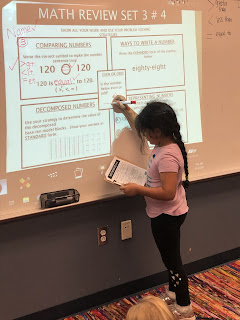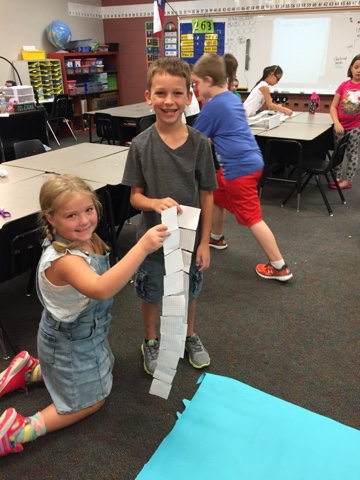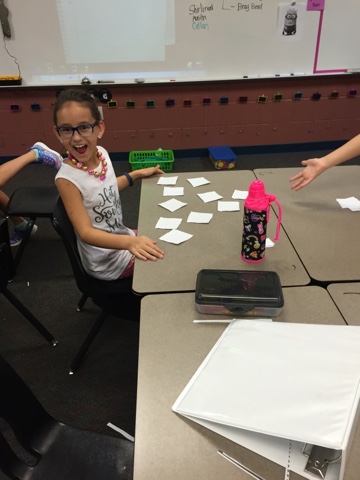This is definitely new territory for all of us! Thank you so much for reaching out and for working with your children at home. First and foremost, I suggest keeping a routine that is as consistent as possible, limit screen time, find time to connect with your child, involve your child in daily activities (cooking, for example), and give them the chance to explore, play, and be kids. Below you will find a list of suggested activities you can do during this time. Please do not feel pressured to complete everything. I am sending a general list for this week. If you prefer daily suggestions, would like other resources, or tips on how to work with your child on specific skills, please reach out. I am here for you and the students!
Resources
I personally searched each and every one of these websites to ensure they are indeed free. If any site you come across requests credit card information, even for a "free trial," I recommend you do not sign up. There are plenty of FREE resources available. If you would like a resource to address a specific need please let me know.
www.brainpopjr.com This website is paid for by our campus. It has videos and interactive activities with a variety of topics.
username: wlab
password: bpop
www.mycapstonelibrary.com Digital library - Books have audio
username: wilkinson
password: read
www.pebblego.com Non-fiction library - Mainly social studies and science topics - Books have audio
username: wilkinson
password: read
www.coloringsquared.com Math fluency practice - Pages will have to be printed - Please stick to addition, subtraction, and place value pages. Avoid multiplication and division.
www.prodigygame.com Math practice - The students have to advance to different levels. If they do not remember their login from the computer lab, they can create a new login. Parents can monitor progress through a parent portal.
www.storylineonline.net A library of books that are read aloud by famous people.
kids.nationalgeographic.com Many interactive topics for students.
kids.sandiegozoo.net Basically a virtual field trip. Interactive games and topics for kids.
**I did not search every website from the image below, so if any request credit card information, please do not sign up unless you feel it is necessary.**
Suggested Activities by Subject
Reading -
If the students do anything this week, reading is the most important. They can read to themselves, you can read to them, or they can access any of the digital libraries I have mentioned above. I do realize not everyone has access to books at home or internet, so do not panic if this is not possible. If I can support your child in any way with books, please message me.
Writing -
The students can free write. They love to have free choice of utensil! Encourage them to write a story with a beginning, middle, and end. Remind them of capitals, punctuation, and capitalizing the letter I. Encourage them to WOW you with how much they can write. They love to show off their "author's craft!" Feel free to take a picture and send me any of their writing pieces. I will do my best to provide feedback. The students can also write me letters. If you do so via e-mail, I will respond to them. My e-mail is kestes@conroeisd.net.
Writing Topic Ideas: (These are just suggestions. If the students already have ideas they want to write about then allow them to select their own topic.)
Write about your Spring Break.
Write a small moment story of one thing that happened over Spring Break.
Write a letter/email to Mrs. Estes.
Write an imaginative story.
Write a "How To" story explaining how to do something. (Make a sandwich, check out a book from the library, brush your teeth, etc)
Write an "All About" story about a topic they are passionate about.
Write a persuasive/opinion piece about their favorite place. Remind them of the OREO - State your opinion, give reasons and examples, and end by stating their opinion again.
Math -
The students can work on telling time, counting money, addition/subtraction with and without regrouping. We recently moved to 3-digit numbers when adding or subtracting, but they will only have to regroup in 1 place. For example, 428-152 would be an appropriate problem because they only have to "borrow" one time. 428-159 would be beyond what they have learned so far as they will have to "borrow" twice. I will also attach a previous Math Review to the e-mail version of this that they can work on daily.
Cursive -
We have started to learn cursive. The students can practice writing their name. If you go to www.instantworksheets.net you can search individual letters for the students to practice. At this time, they are only focusing on letter formation. Example: in the search bar you can type "lowercase cursive a" and it will bring up a worksheet.
I hope this provides guidance for those wanting to work with the students at home. Once again, if I can help in any other way please let me know. Just a reminder, these are suggested activities, not required. Thank you for being flexible!
Sincerely,
Mrs. Estes























































